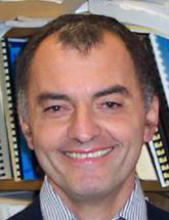2018/08/02(Thu) 10:30 -12:00 五樓第一會議室 5F, 1st Meeting Room

Title
Collective, multi-atom diffusion in epitaxially grown metallic films
Speaker
Prof. Michael C. Tringides (Department of Physics & Astronomy, Iowa State University)Abstract
Surface diffusion is the main process controlling mass transport of many important phenomena such as nucleation, nanostructure growth, pattern formation, and chemical reactions. In practically all cases, it is described as a random walk of independently moving adatoms. A series of experiments in different epitaxially grown metallic films over the last 5 years using different techniques has challenged the classical picture. The experiments have shown unusually fast, collective diffusion in nature, observed over different length and time scales.
STM experiments show that fully completed Pb crystalline islands emerge “explosively” out of the compressed wetting layer on Si(111) after a critical coverage c=1.22ML is reached. The unexpectedly high island growth rates and directional correlations show that mass transport is through the correlated motion of the wetting layer.[1] The STM experiments are supported with real time LEEM experiments [2].The unusual motion of the wetting layer is first seen from irregular shaped islands as the wetting layer is added from the same direction to the growing islands. The islands transform with time to regular crystalline islands of preferred heights. There is similarity between the initial nucleated island morphology and the evolution to stable heights in Pb/Cu(111) so most likely this system is also a good candidate for collective motion [3].
The formation of long anisotropic multi-height Ag islands on Ge(110) is exceedingly fast, when compared to the rates expected from random walk Ag diffusion barriers with the wetting layer being also highly mobile.[4] Evidence for collective diffusion has been seen in Pb/Si(100), Pb/Ge(111), Pb/Ni(111), Pb/W(110), Ag/Si(110), Pb/Cu(111), Pb(Ge(100). A better understanding of these processes can guide the search of collective transport in other systems, especially to identify the growth “window” (of temperature and coverage).
Language
演講語言 (Language): in English